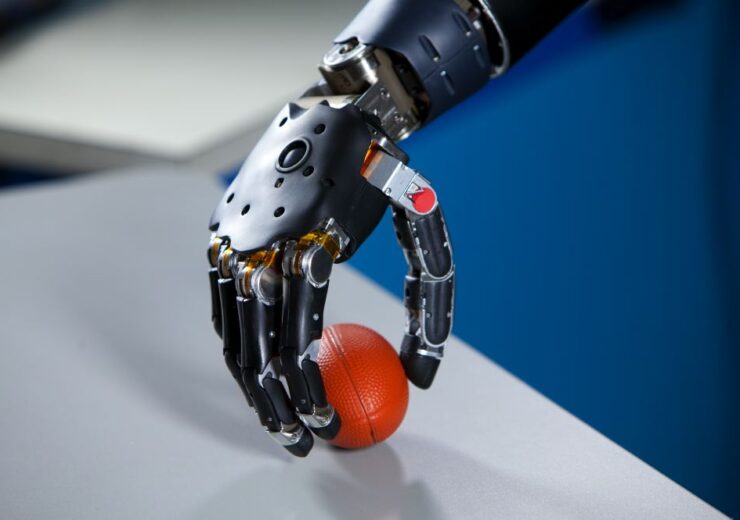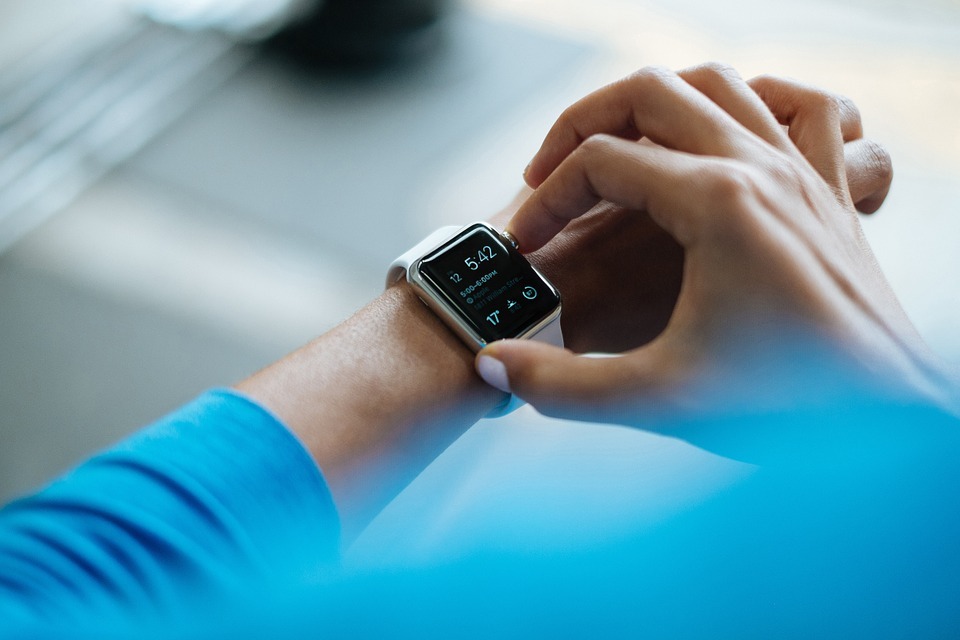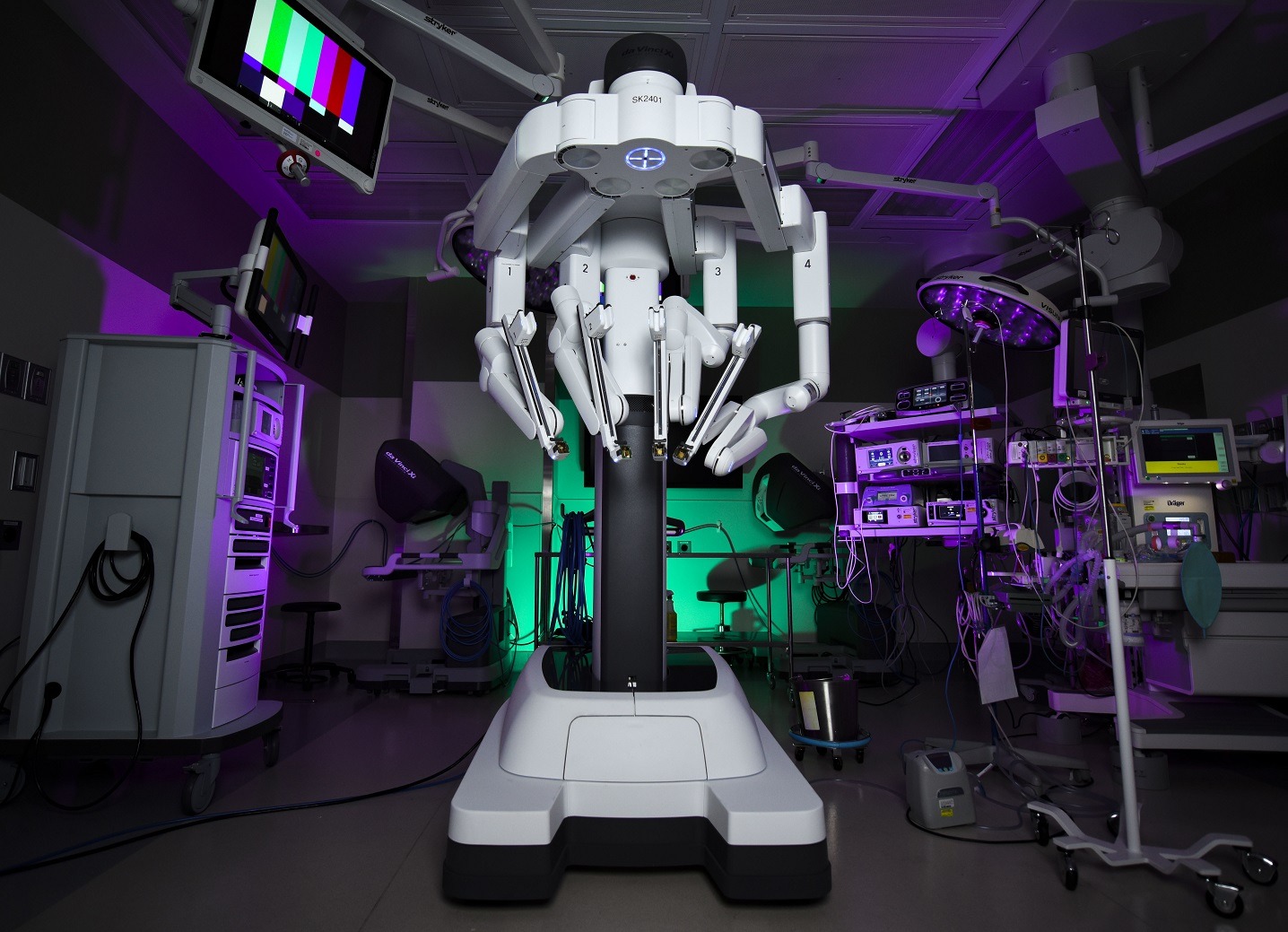Dr Marco Nock, director innovation management at 3D printing technology firm EOS, discusses his predictions for the future of the medtech industry

Robotics is one of several rapidly evolving technologies that looks set to impact the healthcare industry significantly (Credit: The Johns Hopkins University Applied Physics Laboratory/FDA)
New technologies and innovations like AI, robotics and wearable devices are changing the medtech sector all the time – and will no doubt continue to do so over the next two decades. Dr Marco Nock, director innovation management at 3D printing technology firm EOS, discusses his predictions for the future of this industry.
The healthcare industry is forecast to expand rapidly over the next 20 years.
According to a recent study published in The Lancet, the annual global healthcare market, which is currently worth about $8.1tn, will rise to an estimate of $18.28tn by 2040.
This investment in healthcare could increase further following the Covid-19 pandemic, which has led to an acute focus on technological innovation within the industry.
Trends that have emerged in recent years – including medical technology, biotechnology and pharmaceuticals – will continue to accelerate and entirely new ones arise.
Among others, in the next two decades we’ll see developments that focus on the avoidance and containment of pandemics, patient-specific treatments and human upgrades.
Digitalisation: The future of medtech?
The foundation of all these trends and developments is digitalisation.
Digital technology will significantly transform healthcare by 2040. In the next 10 years, we expect more change than in the previous 100 years.
For instance, we are already seeing impact on the wearable medical device market – a market that, according to a recent report published by Grand View Research, is expected to reach $93.19bn globally by 2027.
While the majority of wearables are currently used to track activity levels, sensors will become increasingly miniaturised and actually implanted inside our bodies to monitor a wide variety of health measures, and flag up any abnormalities that may be detected.

This real-time information will be relayed directly to users and healthcare professionals without the patient entering a medical setting.
We are already seeing developments in this area in the form of digital tattoos, which The Medical Futurist Institute has predicted will become commercially available within the next five years.
With fine detail resolution (FDR) solutions for both metal and polymer additive manufacturing, EOS is offering technologies supporting miniaturisation requirements.
This means that our bodies will become ‘smart’, transforming us into cyborgs.
In a study on wearable biosensors, researchers at the Stanford University School of Medicine reported that while currently there are more sensors in our cars than in our bodies, they expect in the future this will be reversed.
Enabling the uptake of new technologies
With all this digital technology generating a continuous stream of big data, artificial intelligence (AI) and machine learning will be used to analyse it all.
These valuable insights, together with an individual’s genetic profile and DNA, will enable doctors to diagnose and prescribe personalised medicine.
These consultations can be done remotely with doctors not even being in the same country as the patient.
Preventative approaches to healthcare ensure that serious illnesses will often be detected before they occur, and the spread of pandemics and infectious diseases will be efficiently prevented.
The often 3D-printed sensors described previously will deliver the data which is the basis of the advanced analytics.
AI will also enable the automation of many processes within healthcare. According to a review published by NHS UK, healthcare professionals spend anywhere between 15-70% of their working time performing administrative tasks.
AI systems will in the future relieve them of these routine activities.
For example, this could include, as stated in a recently published report by Allianz Partners on the future of healthcare, AI chatbots that could tend to the large numbers of walk-in patients to A&E who have non-emergency conditions.
Surgery and robotics
While disease and illness will be largely prevented, if patients do require treatment this could be performed using sophisticated sensor technology within the body.
For instance, 3D-printed nanorobots can swim through the bloodstream and deliver drugs directly to specific types of cells.
This is already in development with Max Planck Institute for Intelligent Systems in Stuttgart, Germany, currently testing ‘microrollers’ that can carry cancer drugs and selectively target human breast cancer cells.
Surgery will also similarly be performed with the help of robotics. According to a report by BIS Research, the global market for surgical robots is estimated to reach $12.6bn in 2025.
By 2040, this amount will be far greater to the extent that standard operations will be performed solely by robots.
For complex procedures, a remote human surgeon will be able to control the surgical robot and give guidance to the operating theatre’s medical team with the help of Augmented Reality (AR).

If surgeons are actively intervening, they will be supported by individualized assistance systems.
Both pre- and post-surgery personalised, 3D-printed interfaces will be used. One for the remote human surgeon and another for the surgery robot, allowing the best possible experience for the patient.
Prostheses and orthoses, which are already widely 3D-printed, will reach a point where they not only attempting to imitate the main function of an original extremity, but also extend the functionality and performance.
First steps in this direction can already be seen in today’s exoskeletons, where a number of 3D-printed parts are being used.
These prostheses will include further sensors and, providing their owners will functionalities worthy of Inspector Gadget.
A more personalised approach to healthcare
With all the data available through wearables and implanted sensors, by 2040 individuals will to a greater extent be taking charge of their own healthcare and wellbeing.
And, of course, they will be reminded, coached and monitored by virtual assistants.
Their diet will better fit their unique DNA and metabolism, as well as their exercise routines, which will be customised to their precise biology.
They will use smart sports equipment adapted to their individual physiometry by 3D-printed parts, which will be digitally connected with sensors to provide a highly individualised and optimized experience around performance and fun.
According to a recent report published by Allied Market Research, the global smart sports equipment market size is expected to grow to $12bn by 2026.
For those individuals who do require care, robots and assistance systems will be found in the care sector to particularly look after the old and vulnerable.
According to the Future of an Ageing Population report published by the UK Government Office for Science, technology is likely to play an increasingly important role in providing health and care support, and in connecting people.
However, all this technology is not about replacing humans, it’s about supporting healthcare professionals in delivering safer, higher quality care.

